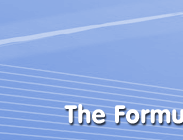      |
|
Contact us at: sooddram@gmail.com |
Is
there a move to make Venezuela part of the Tamil separatist network in Latin
America?
(Interview
with Ms. Tamara Kunanayakam, Ambassador of Sri Lanka
to Cuba)
1.
You are Sri Lanka’s Ambassador to Cuba. What brought you to Caracas?
Our
attention was drawn to the active presence in Caracas of a delegation
representing Canadian HART meeting Government authorities making false,
fabricated and defamatory accusations against the Government of Sri Lanka,
alleging that there was a ‘genocide’ against the Tamil community in Sri Lanka
and ‘concentration camps.'
They were trying to
persuade the Venezuelan Government to give refuge to members of the Tamil
community who they claimed were held incommunicado in Indonesia after their
ship was allegedly intercepted on its way to Australia.
It baffles me why an organisation in Canada, an immigration country with some
250,000 Tamil residents, should ask Venezuela – a
Spanish speaking country – to give refuge to persons who are in the other end
of the world - Indonesia and who want to go to Australia!
I can only surmise that
this was only a pretext, the real objective being to lure Venezuela into
providing symbolic recognition to the pseudo Transnational Government of Tamil Eelam (TGTE) that had just held its inaugural Congress in
Philadelphia, its goal being to establish a separate State in Sri Lanka. They
were also hoping to obtain Venezuela’s help to organise
a network in Latin America to promote their separatist cause.
2. Who is behind
Canadian HART?
Canadian HART was
launched in 2008 by LTTE front organisations, the
Tamil Youth Organisation of Canada (TYO – Canada),
the Canadian Tamil Congress and Tamil Women’s Organisation.
The LTTE’s Tiger flag boldly flutters on the home page of the TYO-Canada
website, despite the LTTE being banned as a terrorist organisation.
The TYO and the Canadian Tamil Congress are also listed as supporters of the
Canadian HART operated website www.tamilidpcrisis.org
The Canadian Tamil
Congress is one of the most influential founders of the recently formed Global
Tamil Forum (GTF), which was created by ex- LTTE International Chief Selvarasa Pathmanathan alias KP by
bringing together 15 existing LTTE front organizations from different Western
countries with the goal of establishing a separate State in Sri Lanka. KP is
one of the two architects of TGTE.
In January this year,
Canadian HART Media Team Coordinator Jessica Chandrashekar
accompanied Saradha Nathan, a member of another LTTE
front organisation, the Australian Tamil Congress, to
Indonesia to visit the so-called asylum-seekers detained in Indonesia. The
Australian Tamil Congress is also founder of the pro-LTTE pro-separatist Global
Tamil Forum.
Canadian HART Jessica Chandrashekar was apprehended trying to smuggle laptops and
other documents to those on board. Both she and Saradha
Nathan were taken into questioning in Indonesia on suspicion of human
trafficking. It is reported that a high-profile LTTE leader who had been
deported from Toronto and several other identified LTTE members were on board
the vessel.
These organisations and their campaign of defamation have the
support of certain major powers, their institutions and NGOs such as the
International Crisis Group, Human Rights Watch, Reporters without Borders,
Amnesty International, The Real News Network of Sharmini
Peries, and individuals such as Ron Ridenour and
Patrick O’Donoghue.
3. You are part of the
Tamil community yourself. What do you have to say about the allegations of
genocide by Canadian HART?
Such allegations are
ridiculous, a caricature and dangerous. Yes, I belong to the Tamil community
and I’m proud to be Sri Lankan!
Cries of genocide were
heard only during the last phase of the war and only when the military defeat
of the LTTE became possible and to justify external intervention to rescue its
leaders.
If one takes a closer
look at the definition of ‘genocide’ in the 1948 UN Convention on the Prevention
and Punishment of the Crime of Genocide, you will have a hard time finding
evidence that there was intent on the part of the Government of Sri Lanka “to
destroy, in whole or in part” the Tamil community.
The Tamil community represents about 18% of a total Sri Lankan population of
about 21 million. Although there is a large concentration of the community in
the North, the majority live outside alongside other Sri Lankan communities,
Sinhala, Muslim, Moor, Malay and Burghers. If there was genocide, would the
communities be living peacefully alongside each other? Since time immemorial,
mixed marriages have been common. This is true in my own family.
You will find political
parties emanating from the Tamil community in Government. Others emanating from
the same community have elected representatives in parliament. Even the
pro-LTTE political Party TNA has entered the democratic process and
participated in recent elections. Members of the community are at senior levels
of Government, in the judiciary and law enforcement agencies, in the various
professions, in Universities, in the press, in business – in every walk of
life! Sri Lanka’s former Minister of Foreign Affairs, Lakshman
Kadirgamar was from the community. He was
assassinated by the LTTE. After the Eastern Province was liberated by
Government forces with the aid of a breakaway LTTE faction, provincial
elections were held and a former LTTE child-soldier was appointed by the
President as Chief Minister of that province. An ex-LTTE Commander was appointed
as Minister of National Integration.
Government forces were
engaged not against the Tamil community, but against a terrorist organisation that fought a relentless and ruthless war for
separation. They were engaging LTTE suicide squads, the Black Tigers, trained
in suicide operations, unprecedented in history. The Black Tigers were involved
in the assassination of former Prime Minister of India Rajiv Gandhi and Sri
Lankan President Ranasinghe Premadasa.
Let’s recall that right
from the beginning of his mandate and practically until the end of the war in
May 2009, President Mahinda Rajapaksa
continued to call for discussions, even face to face, with the LTTE leader Prabakharan, who didn’t even respond.
Throughout the war, the
Sri Lankan Government continued to transport – physically – salaries of pubic servants to LTTE-controlled areas so that Tamil
community was not deprived of essential services.
The Eastern Province was
liberated in 2007 by the Sri Lankan armed forces fighting alongside other
groups emanating from the Tamil community, including an important faction that
split from the LTTE, Within 6 months the Government had resettled 220,000 IDPs
from that Province. In fact, some NGOs and governments protested that it was
too fast!
The more recent IDPs numbering
some 300,000 members are those who fled for safety from LTTE-controlled areas
to Government cleared areas in May 2009. They had been forced to follow the
trail of a retreating LTTE across jungles for use as human shields. Many had
been corralled out of the Jaffna peninsula at gunpoint by the LTTE, as early as
1995, during the first big enforced exodus.
In the last stages of
the war when the LTTE was cornered, it is well known that civilians were
prevented from moving out of the line of fire or escaping to
government-controlled areas. In an attempt to prevent them escaping, the LTTE
fired at the fleeing civilians, launched grenade and mortar attacks, and sent
suicide bombers to explode in their midst.
4. But,
what about allegations of concentration camps?
There are NO
concentration camps in Sri Lanka!
To accommodate this
unprecedented surge of fleeing hostages, the Government rapidly set up welfare
villages with UN assistance. In the welfare villages, not a single person
starved even for a day! Not a single outbreak of disease! Not a single death by
unnatural causes reported! Efforts were made to provide education facilities
for children. In November 2009, 19,364 boys and 19,644 girls were attending
classes within the Welfare Village. An important programme
of rehabilitation of former child soldiers and ex-combatants was conducted.
From May 2009, mortality rates had dropped to an average of 2 to 3 per day
giving an annual crude mortality rate of 4,4 per 1000
persons in Vavuniya, which had the largest number of
IDP villages. This is compatible with mortality rates in any other part of the
country.
The resettlement process
conducted in cooperation with UNHCR according to International standards has
been rapid, despite the over 1.5 million landmines and UXOs that have had to be
cleared to guarantee the safety of returnees. Today, more than 80% of the IDPs
have returned to their homes or are with host families. The 20% remaining in
welfare villages have been cleared to leave at any time.
More than 68 UN agencies,
INGOs and NGOs have access to the villages and assist in the resettlement
process. More than 173 media personnel have visited the area since 2009 and can
testify.
So far, out of 11,000
IDPs identified as LTTE combatants, over 2000 have been released after
completing a rehabilitation programme. These include
847 females, 253 children and 55 university students. At present, there are 148
University students, including 51 females, under rehabilitation.
Canadian HART and
foreign supporters of separatism such as Ron Ridenour conveniently forget the
collective forcible eviction of the Muslim population by the LTTE from the
North and North-West of the country in October 1990. They were given only 24
hours to take a few personal items. It is only now, 20 years after their
expulsion that my Government has been able to even begin resettling the over
60,000 Muslims still displaced.
At that time and ever
since, nobody called this barbarous act ‘genocide’ or ‘ethnic cleansing’!
5. Does
the Global Tamil Forum (GTF) and the Transnational Government of Tamil Eelam (TGTE) represent the Tamil Diaspora and the entire
Tamil community?
No, they don’t!
The GTF and the TGTE
claim that they represent the ‘Tamil Diaspora,’ which is then rehashed by
individuals like Ron Ridenour, to justify claims of genocide and hence the need
for a separate State.
Both organisations
were formed by international leaders of the earlier LTTE and are composed of
LTTE front organisations and their supporters in
various Western countries. What they have in common is their LTTE origins and
the demand for a separate State. Having lost territory and control over the
Tamil community in Sri Lanka, claims of genocide has become a facile argument
to justify foreign intervention to help create a separate State.
The TGTE is a re-branded
manifestation of the LTTE overseas structure. Its co-architects are Visuvanathan Rudrakumaran, former
international legal advisor of the LTTE and New York based Lawyer, and Selvarasa Pathmanathan alias KP,
previously International Chief in charge of international LTTE branch
administration, global fund raising and arms acquisition. The TGTE is
unambiguously clear about its ultimate goal being creation of a separate State.
At its inaugural Congress in Philadelphia, the LTTE flag was openly flaunted
alongside the US flag, despite it being a banned terrorist organization, and Rudrakumaran was elected as Interim Chief Executive of
TGTE. As I mentioned earlier, the GTF too is an entity formed by bringing
together several LTTE front organisations in the
West.
These organisations are unrepresentative, but project themselves
as the ‘sole representatives of the Tamil people.’ Their leaders belong to a
financially powerful and influential class of educated professionals and
businesspeople residing in the West and benefiting from external political and
financial backing.
Let us recall the brutal
war the LTTE waged against other groups issuing from the Tamil community,
assassinating intellectuals, politicians and activists to establish itself as
the ‘sole representative.’ At the same time, its representatives moved into
gain a stranglehold over the Tamil community in the west – including through
intimidation, assault, and threats to families in Sri Lanka. Paris and Toronto
were prime examples of the phenomenon, where unquestioning compliance was
demanded and wrought.
The TGTE too has made
clear that it will not take into account decisions of the so-called “Tamil
leadership” inside Sri Lanka unless they accept its separatist agenda.
No, the Tamil community
is not a homogenous group!
Our perceptions of who
we are and the choices we make depend essentially on our historical origins,
our economic and social status, geographic location, and cultural background.
For instance, the demand of almost 1 million workers belonging to the Tamil
community brought as indentured labour by the British
from India was to obtain Sri Lankan nationality. The LTTE showed no concern
whatsoever for the fate of this working class.
Within Sri Lanka, even
in regions such as the East and the northern Jaffna peninsula, which
separatists claim as their territory, there is no popular support for the
separatist cause.
As for INGOs and their
backers and individuals who tow the LTTE/TGTE line, genocide is only a pretext
for achieving a hidden agenda. Perhaps we are seeing a new model for external
intervention in the making, creation of a dangerous precedent. First, encourage
groups without territory or control over the population to establish
‘Transnational Governments.’ Then, facilitate a campaign of defamation to
justify intervention by a nebulous ‘international community’ to exercise the
so-called ‘Responsibility to Protect’.’ Of course, all this has nothing to do
with the principles of the UN Charter or human rights!
My question to you is, would you like to see this happening in Latin America
where regional integration, the dream of Bolivar, is on the agenda?
6. In Latin America we
have little information about Sri Lanka. Was there a popular insurrection in
your country?
Insurrection implies an organised rebellion aimed at overthrowing the Government in
place. The goal of the LTTE was not to overthrow the Government but to
establish a separate State of Tamil Eelam under its
totalitarian control. That is why they projected the Sinhalese people as the
enemy.
The LTTE was NOT a
liberation movement. It never had an economic or social programme
nor did it concern itself with development of the areas it controlled or in
improving the well-being of the Tamil community. The only institutions they set
up were institutions of coercion – police stations, tribunals, prisons. They
had airplanes, a fleet of tankers, and even submarines.
It was a terror organisation terrorising even
members of the community they claimed to represent. Theirs was an anti-civilian
approach! Child soldiers were forcibly recruited for their notorious
baby-brigades and forewarned that their families would be wiped out if they
surrender. They invented the suicide belt and pioneered the use of women in
suicide attacks. Their soldiers wore cyanide vials for consumption upon capture.They practiced extortion. They were known within
the Tamil community as the “Eelam Enterprise” for
their involvement in human, arms and drug trafficking and sea piracy.
Tens of thousands of civilians
from the community who did not subscribe to their separatist goal were
physically eliminated, including leaders of progressive political groups and
their cadres, politicians and intellectuals. In one day alone, they killed 175
leaders of the Tamil Eelam Liberation Organisation. Then they machine-gunned the entire Central
Committee of the left-wing EPRLF – the Eelam Peoples´
Revolutionary Liberation Front.
It shocks me to hear
comparisons being made between the LTTE and genuine liberation movements in
Latin America and the Middle East.
Is it ethical to brand
an entire community – the Sinhalese in this case – as enemy? Is it moral to
target innocent civilians and workers in pubic
places, transit hubs, buses, trains, marketplaces, temples, banks, office
buildings, etc.
Ron Ridenour’s
presentation of Rudrakumaran, top LTTE and TGTE
leader and associate of the mafiosi
KP, as a moral reference is an insult to the intelligence of people,
particularly of the Tamil community itself!
7. How do you see your
country going forward?
A new historical period
is opening up for our country with a strong potential for development. Sri
Lanka is the 2nd fastest growing economy in Asia, second only to China, and the
8th fastest growing economy in the world. According to the UNDP, Sri Lanka is
one of the countries of the world on the threshold of achieving the Millennium
Development Goals.
With the elimination of
an autocratic group, democratic space has been opened. A large number of
important emergency laws and regulations have been relaxed and a Commission on
Lessons Learned and Reconciliation established. Soon, Northern Provincial
Council elections will be held and members of the Tamil community in the North
will be able to choose their own Chief Minister and administration. We are also
engaging in a comprehensive dialogue with all political parties to stabilise the democratic administration.
We are building a strong
national industry and agriculture to reduce import dependence and to achieve
greater self-reliance, food and energy security. Every effort is being made to
harness and further develop the country’s natural wealth and resources.
A massive development programme is underway in the recently liberated Northern and
Eastern provinces with a total budget of US$ 4,3
billion for the period 2007 to 2012. In addition, from 2010 onwards, the
Government will allocate some US$ 1 billion each year – for 3 years – for the
North and East for reconstruction and rehabilitation.
With an average GDP
growth of 6% or above between 2005 to 2008, our target is to achieve an average
economic GDP growth of 8% after 2010 and to double GDP per capita to US$4,000
by 2016. Our priority is to ensure that growth is spread more evenly.
The almost 30-year old
conflict ended and Sri Lanka has the potential to develop into a naval,
aviation, commercial, energy and knowledge hub, serving as a key link between
the East and West. As one of the fastest growing economies and a feeder to
rapidly growing China and India, Sri Lanka can become a regional centre and
major gateway to India.
8. How do you see the
relations between Sri Lanka and Venezuela?
Our Governments have
excellent relations based on the principles of mutual respect, solidarity and
reciprocity, and the relations between President Hugo Chavez and President Mahinda Rajapaksa have always
been warm and friendly.
Sri Lanka and Venezuela
are both firmly committed to the defence of State
sovereignty, national independence, territorial integrity and non-interference,
and to the pursuance of an independent, free and non-aligned foreign policy.
Strengthening the national economy for the benefit of people, improving social
well-being, achieving food and energy security, protection and preservation of the
environment are common concerns. We are also firmly committed to a strong
multilateral system and vibrant South-South cooperation.
During my cordial
meeting with the Minister of External Relations, Mr.Nicolas
Maduro, we reaffirmed the continuing solidity of the
friendly relations between our two countries and the need to strengthen our
cooperation in areas of mutual interest. My Government will exert every effort
to do so at the bilateral as well as multilateral levels – at the United
Nations, within the Non-Aligned Movement and the G.-15, which is chaired by Sri
Lanka.
(This
is an English translation of Ambassador Gunanayagam’s
Interview to the Venezeula newspaper “Correo del Orinoco”)
உனக்கு
நாடு இல்லை என்றவனைவிட
நமக்கு நாடே இல்லை
என்றவனால்தான்
நான் எனது நாட்டை
விட்டு விரட்டப்பட்டேன்.......

ராஜினி
திரணகம
MBBS(Srilanka)
Phd(Liverpool,
UK)
'அதிர்ச்சி
ஏற்படுத்தும்
சாமர்த்தியம்
விடுதலைப்புலிகளின்
வலிமை மிகுந்த
ஆயுதமாகும்.’ விடுதலைப்புலிகளுடன்
நட்பு பூணுவது
என்பது வினோதமான
சுய தம்பட்டம்
அடிக்கும் விவகாரமே.
விடுதலைப்புலிகளின்
அழைப்பிற்கு உடனே
செவிமடுத்து, மாதக்கணக்கில்
அவர்களின் குழுக்களில்
இருந்து ஆலோசனை
வழங்கி, கடிதங்கள்
வரைந்து, கூட்டங்களில்
பேசித்திரிந்து,
அவர்களுக்கு அடிவருடிகளாக
இருந்தவர்கள்மீது
கூட சூசகமான எச்சரிக்கைகள்,
காலப்போக்கில்
அவர்கள்மீது சந்தேகம்
கொண்டு விடப்பட்டன.........'
(முறிந்த
பனை நூலில் இருந்து)
(இந்
நூலை எழுதிய ராஜினி
திரணகம விடுதலைப்
புலிகளின் புலனாய்வுப்
பிரிவின் முக்கிய
உறுப்பினரான பொஸ்கோ
என்பவரால் 21-9-1989 அன்று
யாழ் பல்கலைக்கழக
வாசலில் வைத்து
சுட்டு கொல்லப்பட்டார்)
Its
capacity to shock was one of the L.T.T.E. smost potent weapons. Friendship with
the L.T.T.E. was a strange and
self-flattering affair.In the course of the coming days dire hints were dropped
for the benefit of several old friends who had for months sat on committees,
given advice, drafted latters, addressed meetings and had placed themselves at
the L.T.T.E.’s beck and call.
From: Broken Palmyra
வடபுலத்
தலமையின் வடஅமெரிக்க
விஜயம்
(சாகரன்)
புலிகளின்
முக்கிய புள்ளி
ஒருவரின் வாக்கு
மூலம்
பிரபாகரனுடன் இறுதி வரை இருந்து முள்ளிவாய்கால் இறுதி சங்காரத்தில் தப்பியவரின் வாக்குமூலம்
திமுக, அதிமுக, தமிழக மக்கள் இவர்களில் வெல்லப் போவது யார்?
(சாகரன்)
தங்கி நிற்க தனி மரம் தேவை! தோப்பு அல்ல!!
(சாகரன்)
(சாகரன்)
வெல்லப்போவது
யார்.....? பாராளுமன்றத்
தேர்தல் 2010
(சாகரன்)
பாராளுமன்றத்
தேர்தல் 2010
தேர்தல்
விஞ்ஞாபனம் - பத்மநாபா
ஈழமக்கள் புரட்சிகர
விடுதலை முன்னணி
1990
முதல் 2009 வரை அட்டைகளின்
(புலிகளின்) ஆட்சியில்......
(fpNwrpad;> ehthe;Jiw)
சமரனின்
ஒரு கைதியின் வரலாறு
'ஆயுதங்கள்
மேல் காதல் கொண்ட
மனநோயாளிகள்.'
வெகு விரைவில்...
மீசை
வைச்ச சிங்களவனும்
ஆசை வைச்ச தமிழனும்
(சாகரன்)
இலங்கையில்
'இராணுவ'
ஆட்சி வேண்டி நிற்கும்
மேற்குலகம், துணை செய்யக்
காத்திருக்கும்;
சரத் பொன்சேகா
கூட்டம்
(சாகரன்)
எமது தெரிவு
எவ்வாறு அமைய வேண்டும்?
பத்மநாபா
ஈபிஆர்எல்எவ்
ஜனாதிபதித்
தேர்தல்
ஆணை இட்ட
அதிபர் 'கை', வேட்டு
வைத்த ஜெனரல்
'துப்பாக்கி' ..... யார் வெல்வார்கள்?
(சாகரன்)
சம்பந்தரே!
உங்களிடம் சில
சந்தேகங்கள்
(சேகர்)
(m. tujuh[g;ngUkhs;)
தொடரும்
60 வருடகால காட்டிக்
கொடுப்பு
ஜனாதிபதித்
தேர்தலில் தமிழ்
மக்கள் பாடம் புகட்டுவார்களா?
(சாகரன்)
ஜனவரி இருபத்தாறு!
விரும்பியோ
விரும்பாமலோ இரு
கட்சிகளுக்குள்
ஒன்றை தமிழ் பேசும்
மக்கள் தேர்ந்தெடுக்க
வேண்டும்.....?
(மோகன்)
2009 விடைபெறுகின்றது!
2010 வரவேற்கின்றது!!
'ஈழத் தமிழ்
பேசும் மக்கள்
மத்தியில் பாசிசத்தின்
உதிர்வும், ஜனநாயகத்தின்
எழுச்சியும்'
(சாகரன்)
மகிந்த ராஜபக்ஷ
& சரத் பொன்சேகா.
(யஹியா
வாஸித்)
கூத்தமைப்பு
கூத்தாடிகளும்
மாற்று தமிழ் அரசியல்
தலைமைகளும்!
(சதா. ஜீ.)
தமிழ்
பேசும் மக்களின்
புதிய அரசியல்
தலைமை
மீண்டும்
திரும்பும் 35 வருடகால
அரசியல் சுழற்சி!
தமிழ் பேசும் மக்களுக்கு
விடிவு கிட்டுமா?
(சாகரன்)
கப்பலோட்டிய
தமிழனும், அகதி
(கப்பல்) தமிழனும்
(சாகரன்)
சூரிச்
மகாநாடு
(பூட்டிய)
இருட்டு அறையில்
கறுப்பு பூனையை
தேடும் முயற்சி
(சாகரன்)
பிரிவோம்!
சந்திப்போம்!!
மீண்டும் சந்திப்போம்!
பிரிவோம்!!
(மோகன்)
தமிழ்
தேசிய கூட்டமைப்புடன்
உறவு
பாம்புக்கு
பால் வார்க்கும்
பழிச் செயல்
(சாகரன்)
இலங்கை
அரசின் முதல் கோணல்
முற்றும் கோணலாக
மாறும் அபாயம்
(சாகரன்)
ஈழ விடுலைப்
போராட்டமும், ஊடகத்துறை
தர்மமும்
(சாகரன்)
(அ.வரதராஜப்பெருமாள்)
மலையகம்
தந்த பாடம்
வடக்கு
கிழக்கு மக்கள்
கற்றுக்கொள்வார்களா?
(சாகரன்)
ஒரு பிரளயம்
கடந்து ஒரு யுகம்
முடிந்தது போல்
சம்பவங்கள் நடந்து
முடிந்துள்ளன.!
(அ.வரதராஜப்பெருமாள்)
அமைதி சமாதானம் ஜனநாயகம்
www.sooddram.com